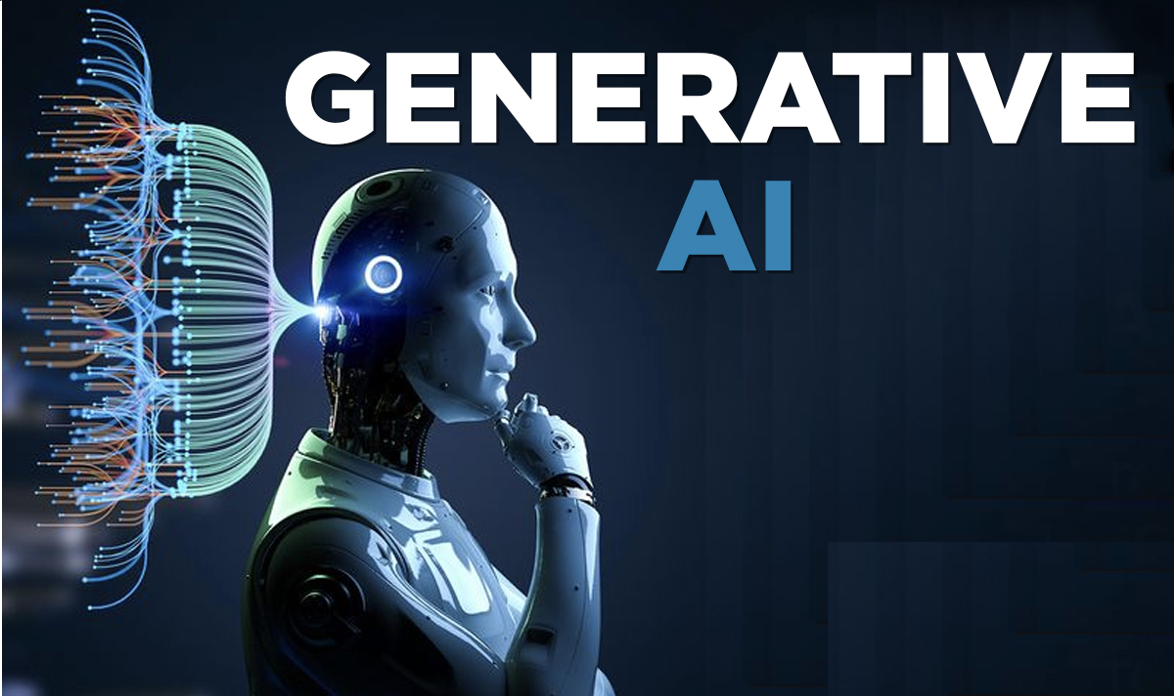What used to be a domain mainly located in works of fiction has in the recent years become a reality and integrated into numerous aspects of our societies. It has become a part of people’s lives as many household devices and services use voice-activated assistants or AI algorithms. Generative AI is one of the most rapidly evolving set of applications of artificial intelligence that is re-creating how one generates content, designs products and solves diverse problems. But generative AI, what is this and why is it such a big deal?
What is Generative AI?
Generative AI is a subset of algorithms involving deep learning, as it generates new content based on the existing data patterns. Generative AI models are quite different from the machines that are normally trained to learning data and classifying it; instead, generative ones generate new data. These models are largely based on the neural networks structure and use techniques such as deep learning and are composed of architectures such as GANs or VAEs.
How does generative AI work?
The basis of generative AI is actually considered to be rather complex networks, called neural networks that are capable of learning from data. It could be better to illustrate the concept when discussing certain architectures, such as GANs. GANs consist of two neural networks: Such nets include; a generator and a discriminator. The generator generates new data samples, on the other hand, the discriminator assesses the data samples it has generated. The two networks are trained simultaneously in an interactive process, where the generator learns to generate data that is progressively more believable, while the discriminator’s task is to determine with increasing accuracy whether the data it is given is real or fake. This form of training pits the discriminator against the generator and the latter ends up being very authentic.
Applications of Generative AI
Generative AI is a versatile tool with applications spanning numerous industries:
1. Art and Design:
Generative AI means artists and designers can use AI to produce new art pieces; that ranges from paintings and music to fashion.
2. Entertainment:
Let me describe the opportunities of AI application in film and gaming industries to enhance characters and scenes, generative AI is used in the industries. It can also create new music tracks and sound effects to produce a completely new note of the games’ music track.
3. Healthcare:
Exploratory AI is helping to fast track drug development by finding out what molecular form novel drugs could take. It also creates synthetic medical information that can be used to train other AI models thus increasing their sensitivity in diagnosis.
4. Marketing and Advertising:
Using generative AI it is possible to generate unique marketing copies within product descriptions or create unique advertizing campaigns based on individual preferences.
5. Education:
In the learning process, there be an ability to create individual lessons and tasks also an ability to recreate real life situations for learning, making the process far more effective.
The future of Generative AI
There is an enormous market to realize the generative AI, and even now, we are talking about harnessing only a few percent of it. Thus, it is possible to predict the further development of these technologies, as well as even more high-profile applications. Here are a few future directions for generative AI:Here are a few future directions for generative AI:
1. Human-AI Collaboration:
Thus integrating; generative AI will augment human creativity and assist in pushing the frontiers of art, science and technology.
2. Ethical and Responsible AI:
When generative AI is getting stronger, there arise a number of ethic issues including deepfakes and misuse. Thus, it will be critical to establish the fundamental principles for the proper application of generative AI for the benefit of society.
3. Enhanced Realism:
The further development of generative models will be even more in-depth and realistic and will fundamentally merge AI and the work of an author.
4. Interdisciplinary Applications:
Innovations created by generative AI will erase disciplinary divisions as we know them, that is still waiting to be seen but they will definitely appear in planning, architecture, or environmental sciences.
Conclusion
Generative AI is not a new method in technology but a revolution in creativity. When one allows AI to write one is actually unleashing the possibilities of the world and innovation. That is why as we move forward to discover and advance the mentioned technologies generative AI will undeniably be significant in defining the future of creativity and innovations. In any form of industry from the arts to the sciences or social aspects, the era of generative AI has begun, and it also interesting to be part of this change.




0 Comments